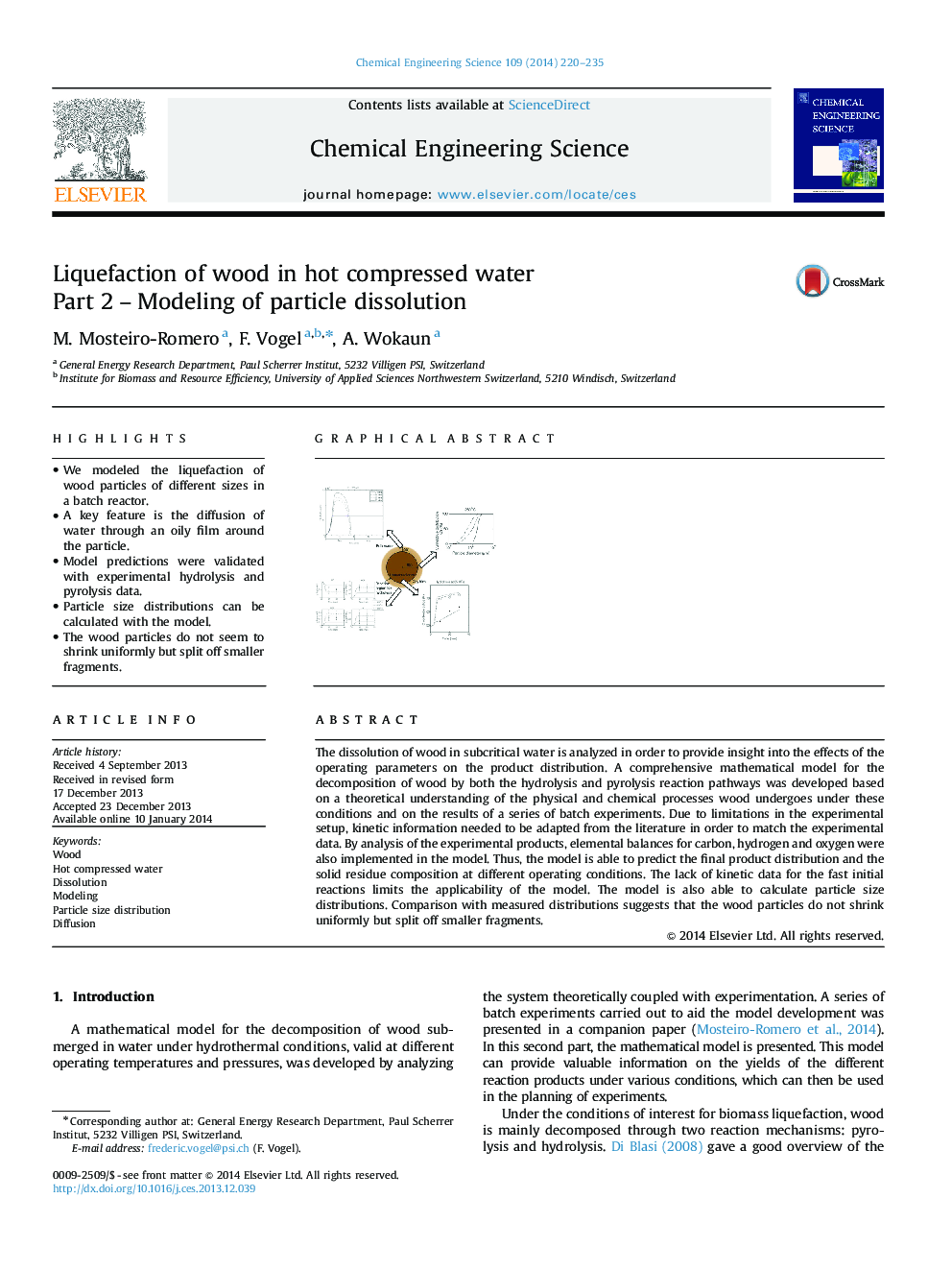| Article ID | Journal | Published Year | Pages | File Type |
|---|---|---|---|---|
| 154896 | Chemical Engineering Science | 2014 | 16 Pages |
•We modeled the liquefaction of wood particles of different sizes in a batch reactor.•A key feature is the diffusion of water through an oily film around the particle.•Model predictions were validated with experimental hydrolysis and pyrolysis data.•Particle size distributions can be calculated with the model.•The wood particles do not seem to shrink uniformly but split off smaller fragments.
The dissolution of wood in subcritical water is analyzed in order to provide insight into the effects of the operating parameters on the product distribution. A comprehensive mathematical model for the decomposition of wood by both the hydrolysis and pyrolysis reaction pathways was developed based on a theoretical understanding of the physical and chemical processes wood undergoes under these conditions and on the results of a series of batch experiments. Due to limitations in the experimental setup, kinetic information needed to be adapted from the literature in order to match the experimental data. By analysis of the experimental products, elemental balances for carbon, hydrogen and oxygen were also implemented in the model. Thus, the model is able to predict the final product distribution and the solid residue composition at different operating conditions. The lack of kinetic data for the fast initial reactions limits the applicability of the model. The model is also able to calculate particle size distributions. Comparison with measured distributions suggests that the wood particles do not shrink uniformly but split off smaller fragments.
Graphical abstractFigure optionsDownload full-size imageDownload high-quality image (99 K)Download as PowerPoint slide
